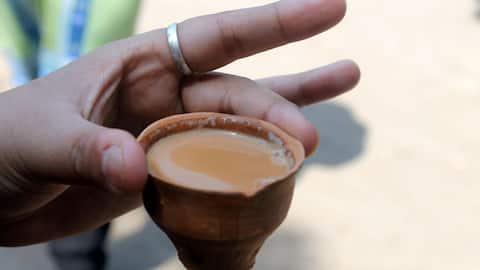Kulhad chronicles: Exploring the cultural impact of kulhad in India
What's the story
In India, the use of clay glasses, or kulhad, has deep cultural and historical importance. For many generations, Indian beverage culture has been deeply rooted in these modest yet iconic cups. These kulhads had a prominent place in the bustling landscape of Indian street food. Crafted from nutrient-rich clay, these cups are shaped and fired in a kiln, adding a unique earthy taste to drinks while also providing health benefits.
Significance
Kulhad was adopted for its earthy flavor
The use of kulhads can be traced back to ancient times, where they were employed for serving beverages, especially during festivals and religious ceremonies. Porous clay imparts a distinctly earthy flavor to the beverages, adding a nuanced richness to the taste. This unique characteristic has contributed to the widespread preference for kulhads in serving traditional Indian drinks.
Eco-friendly
Sustainable alternative to plastic cups
Kulhads are a popular eco-friendly substitute for single-use plastics when it comes to enjoying beverages like tea, coffee, and milk. Unlike plastic cups, kulhads are entirely compostable and pose no environmental risks when discarded in landfills or oceans. Paper cups, which are made from wood pulp with a small amount of plastic lining, also often end up in landfills due to improper recycling. Recognizing the potential environmental benefits, several Indian states have embraced kulhad usage as part of official initiatives.
Benefits
Using kulhads has health benefits
Drinking beverages from kulhads provides numerous health advantages, such as preventing infections, gas, and acidity. The single-use and eco-friendly nature of kulhads eliminates the risk of infections caused by unclean glasses or plastic cups. Their alkaline properties help prevent excessive acid production in the stomach, reducing gastrointestinal issues. Furthermore, unlike foam and plastic cups containing harmful chemicals, kulhads are chemical-free and safe for consumption.
Limitations
Kulhad also has some limitations
Despite their eco-friendly and health benefits, kulhads do have some drawbacks. They can absorb liquid due to the clay's porous nature, which can be resolved by soaking them in water before use. Kulhads are also fragile, heavier, and require more storage space, making logistics and storage costly. Kulhads are typically made from areas with low levels of heavy metals like lead and cadmium. However, it may not always be possible to check the source of the pots and ensure safety.
Evolution
Kulhad culture today
The concept of kulhad has transcended street corners, with cafes and restaurants adopting kulhads as a symbol of sustainable dining. Besides, kulhads are not just restricted to serving beverages today but rather foods such as momos or pizza as well. Kulhad, known to give an earthy essence or flavor, is believed to enhance the taste of foods served in it. While some people think it is spoiling the taste of the food, others are up for experimentation.
